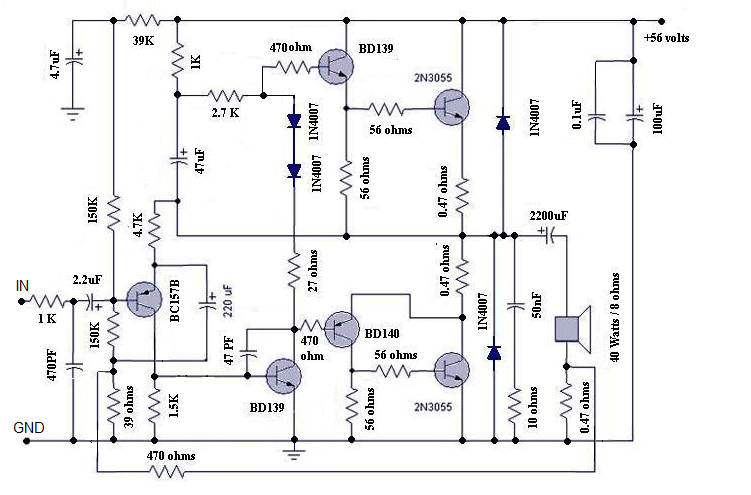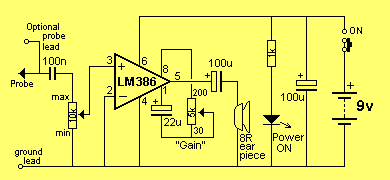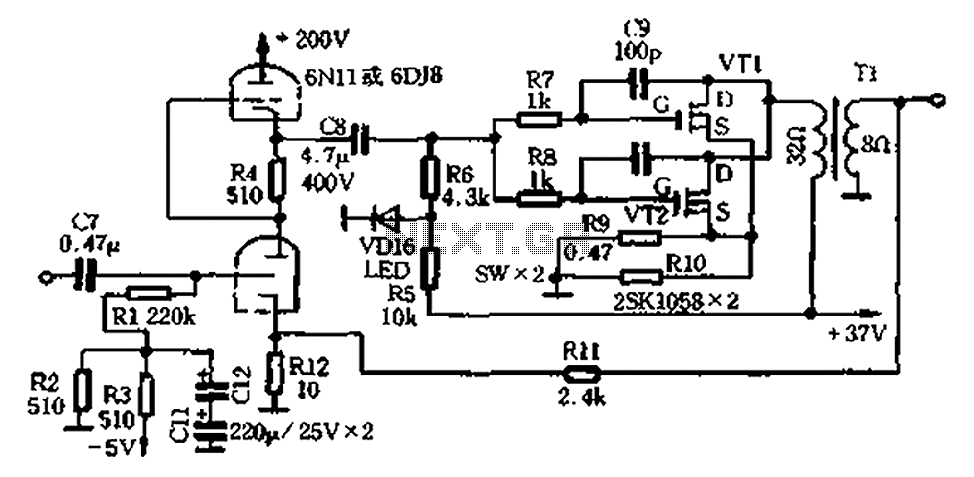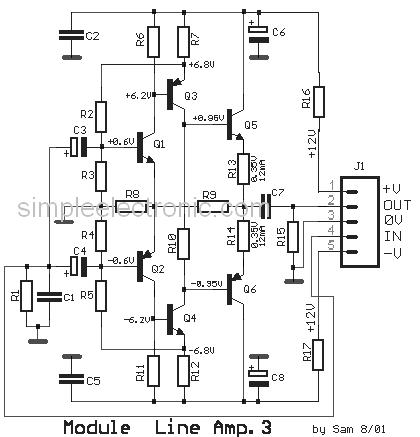
HI-FI integrated amplifier TDA7294-01
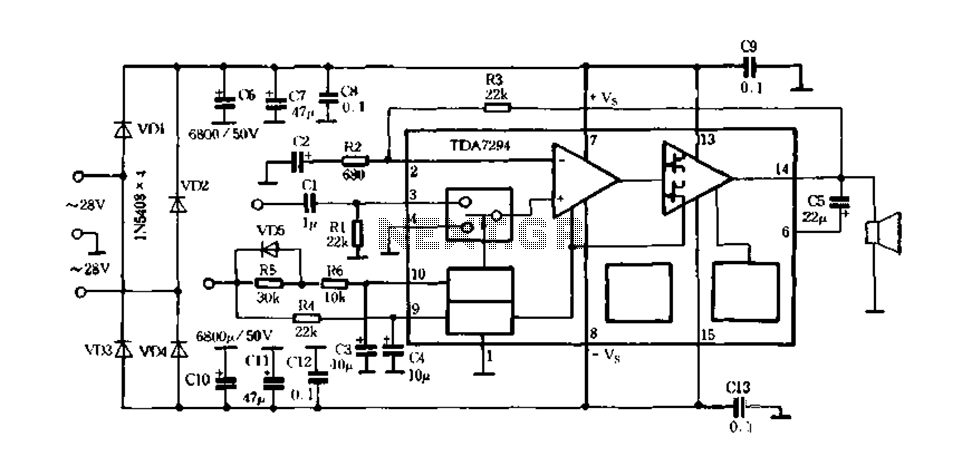
Europe's leading SGS-THOMSON STMicroelectronics recently introduced a new hydrazine fos power integrated amplifier, the TDA7294, to the Chinese mainland. This amplifier has surpassed traditional linear integrated amplifiers and has been successfully released for Hi-Fi applications, such as home theaters and active speakers. The device comes in a 5-pin package, with the pin configuration as follows: one pin for standby, one for the inverting input, one for the positive input, one grounded pin, one empty pin, one bootstrap pin, one pin for +Vs (signal processing section), and one pin for the output. The TDA7294's internal circuit design emphasizes sound quality, combining bipolar signal processing circuitry with the power advantages of MOS technology, resulting in high voltage, low noise, and low distortion, thereby effectively reproducing sound with great fidelity and power. It features short-circuit current and thermal protection, enhancing its performance. Key parameters of the TDA7294 include a supply voltage (V Bi) of up to 40V, a peak output current (Io) of 10A, and an RMS continuous output power of 70W at 35V, with a music power rating of 100W at 4 ohms. The standard application circuit for the TDA7294 shows a loop gain of 30dB, adjustable via resistors R2 and R3, which can increase or decrease the amplifier's gain. Resistors R4, along with capacitor C4, determine the standby time constant, where larger values increase the on/off delay time. Similarly, resistors R5 and R6, along with capacitor C3, set the mute time constant, where larger values prolong the static sound duration. The control terminal allows for standby and mute modes, where a low potential activates these states. When the control voltage is high, it ensures the amplifier transitions smoothly between standby and off states, minimizing switch noise.
The TDA7294 power amplifier is designed to deliver high-quality audio performance with a focus on minimizing distortion and noise, making it ideal for use in high-fidelity audio applications. The internal architecture leverages both bipolar and MOS technologies, which contribute to its ability to handle high power levels while maintaining sound integrity. The amplifier's output stage is engineered to provide robust performance, capable of driving speakers with varying impedances, and is particularly well-suited for home theater systems where dynamic range and clarity are paramount.
The pin configuration is critical to the functionality of the TDA7294. The standby pin allows the amplifier to enter a low-power state when not in use, which is essential for energy conservation in modern audio systems. The input pins facilitate the connection of audio signals, while the bootstrap and output pins are integral to the amplifier's operational efficiency. The design also incorporates a feedback loop, which stabilizes the gain and enhances overall performance.
In practical applications, the TDA7294 can be configured with external components to tailor its performance to specific requirements. The gain can be adjusted by selecting appropriate resistor values, allowing for flexibility in different audio setups. The standby and mute functionalities are particularly useful in consumer electronics, where user experience is enhanced by eliminating unwanted noise during transitions.
Overall, the TDA7294 represents a significant advancement in power amplifier technology, combining sophisticated design with practical features that cater to the demands of modern audio applications. Its robust performance characteristics, combined with protective features, make it a reliable choice for engineers and designers in the audio industry.Europes leading SGS-THOMSON STMicroelectronics recently introduced a tone quite new to the Chinese mainland hydrazine fos power integrated amplifier TDA7294, swept past the lin ear integrated amplifier and thick set successfully released, cold, hard tone t widespread for Hi-Fi areas, such as home theater, active speakers. The device is l 5-pin package, the shape shown in Figure 5-14. Each end of the pin action as follows: O standby pin end; feet to the inverting input; feet for positive input; feet grounded;,, feet empty legs; bootstrap pin end; pin + Vs (signal processing section) feet for a ys (signal processing section); feet standby end; ?
feet muted end; ? feet + v5 (final stage); a pin as an output; ? feet for a n (final stage) 6 TDA7294 internal circuit designed to focus on the tone, both bipolar signal processing circuitry and power advantages of MOS, with high pressure, low noise, low distortion, reproducing sounds great affinity and power and other characteristics; short-circuit current and thermal protection features that make it more perfect performance mouth TDA7294 main parameters; V Bi (supply voltage) for the soil lov ~ 40V; lo (output stream peak) to 10A; corpse o (RMS continuous output power) at vl - soil 35v, 80 when 70W, v a Z7 V, 40 when 70W; music power (RMS) y thatch 38r, as when 8fl. lOOW, V * a disability 29V, 4, f2 when loow day TDA7294 corpus standard application circuit shown in Figure 5-15, Figure 5-15 circuit loop gain is 30dB, increase or decrease R2 R3 can increase the gain of the amplifier gain decreases and vice versa t; R4, C4 decided standby time constant, while waiting for the big increase in the value of on/off times, whereas shorter time; R5.R6, C3 decide mute time constant, the value of large static sound prolonged, whereas shorter; when the control terminal, a low potential to standby and mute status.
When the control termination letter V, because (R5 + R 6) R {, after more than a ? foot foot rises high potential, and the first shutdown goes low, which makes the process both in standby and off static sound state carried out to ensure that the switch noise amplifier 6
The TDA7294 power amplifier is designed to deliver high-quality audio performance with a focus on minimizing distortion and noise, making it ideal for use in high-fidelity audio applications. The internal architecture leverages both bipolar and MOS technologies, which contribute to its ability to handle high power levels while maintaining sound integrity. The amplifier's output stage is engineered to provide robust performance, capable of driving speakers with varying impedances, and is particularly well-suited for home theater systems where dynamic range and clarity are paramount.
The pin configuration is critical to the functionality of the TDA7294. The standby pin allows the amplifier to enter a low-power state when not in use, which is essential for energy conservation in modern audio systems. The input pins facilitate the connection of audio signals, while the bootstrap and output pins are integral to the amplifier's operational efficiency. The design also incorporates a feedback loop, which stabilizes the gain and enhances overall performance.
In practical applications, the TDA7294 can be configured with external components to tailor its performance to specific requirements. The gain can be adjusted by selecting appropriate resistor values, allowing for flexibility in different audio setups. The standby and mute functionalities are particularly useful in consumer electronics, where user experience is enhanced by eliminating unwanted noise during transitions.
Overall, the TDA7294 represents a significant advancement in power amplifier technology, combining sophisticated design with practical features that cater to the demands of modern audio applications. Its robust performance characteristics, combined with protective features, make it a reliable choice for engineers and designers in the audio industry.Europes leading SGS-THOMSON STMicroelectronics recently introduced a tone quite new to the Chinese mainland hydrazine fos power integrated amplifier TDA7294, swept past the lin ear integrated amplifier and thick set successfully released, cold, hard tone t widespread for Hi-Fi areas, such as home theater, active speakers. The device is l 5-pin package, the shape shown in Figure 5-14. Each end of the pin action as follows: O standby pin end; feet to the inverting input; feet for positive input; feet grounded;,, feet empty legs; bootstrap pin end; pin + Vs (signal processing section) feet for a ys (signal processing section); feet standby end; ?
feet muted end; ? feet + v5 (final stage); a pin as an output; ? feet for a n (final stage) 6 TDA7294 internal circuit designed to focus on the tone, both bipolar signal processing circuitry and power advantages of MOS, with high pressure, low noise, low distortion, reproducing sounds great affinity and power and other characteristics; short-circuit current and thermal protection features that make it more perfect performance mouth TDA7294 main parameters; V Bi (supply voltage) for the soil lov ~ 40V; lo (output stream peak) to 10A; corpse o (RMS continuous output power) at vl - soil 35v, 80 when 70W, v a Z7 V, 40 when 70W; music power (RMS) y thatch 38r, as when 8fl. lOOW, V * a disability 29V, 4, f2 when loow day TDA7294 corpus standard application circuit shown in Figure 5-15, Figure 5-15 circuit loop gain is 30dB, increase or decrease R2 R3 can increase the gain of the amplifier gain decreases and vice versa t; R4, C4 decided standby time constant, while waiting for the big increase in the value of on/off times, whereas shorter time; R5.R6, C3 decide mute time constant, the value of large static sound prolonged, whereas shorter; when the control terminal, a low potential to standby and mute status.
When the control termination letter V, because (R5 + R 6) R {, after more than a ? foot foot rises high potential, and the first shutdown goes low, which makes the process both in standby and off static sound state carried out to ensure that the switch noise amplifier 6
Warning: include(partials/cookie-banner.php): Failed to open stream: Permission denied in /var/www/html/nextgr/view-circuit.php on line 713
Warning: include(): Failed opening 'partials/cookie-banner.php' for inclusion (include_path='.:/usr/share/php') in /var/www/html/nextgr/view-circuit.php on line 713
